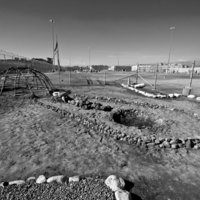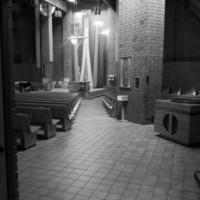Dakota
The Dakota are one of two main contemporary peoples indigenous to the lands that became Minnesota, the other being the Anishinaabe (Ojibwe and Chippewa). Mni Sota Makoče is how Dakota people refer to the place where the water reflects the sky. The Dakota are the easternmost peoples of the Oceti Sakowin or Seven Council Fires, the Indigenous way of referring to the seven Dakota, Lakota, and Nakota peoples of the Great Sioux Nation, speaking different dialects of the same language. The four bands of Dakota peoples have homelands in Minnesota: the Sisseton and Wahpeton in western and southwestern Minnesota, and Mdewakanton and Wahpekute in the southeast.
The Twin Cities metro area sits on Mdewakanton Dakota homelands, including the site where the Minnesota River meets the Mississippi River, which the Mdewakanton consider to be their place of genesis, called Bdote. In 1805, two years after the Louisiana Purchase, Army Lieutenant Zebulon Pike traveled up the Mississippi to secure, through Minnesota's first treaty, a place for a military fort. The U.S. Senate only approved a $2,000 payment to the Dakota, one percent of Pike's valuation of the land, for 100,000 acres of what would become part of the Twin Cities. Today, both Fort Snelling and Minneapolis-St. Paul International Airport sit on the land.
Beginning in the 1830s, Christian missionaries and white settlers pushing westward interrupted the Dakota and their traditional ways of life, bringing changes that would last for decades upon decades. In a series of treaties in the 1850s, Dakota leaders were compelled to cede their homelands in the southern half of Minnesota in exchange for payments and a ten-mile strip of land along either side of the Minnesota River.
When the U.S. failed to meet its obligations under those treaties, some Dakota took up armed resistance in 1862, leading to a forced winter march, the largest mass execution in American history, and ultimately the forced exile in 1863 of all Dakota (some managed to remain; others to return) out of Minnesota to lands in what is now South and North Dakota and to Canada. In 1863, Congress formally abrogated all treaties with Minnesota's Dakota.
Between 1883 and 1934, life on reservations for exiled Dakota (and for those who remained) life was governed by administrative laws known as the Civilization Regulations, sometimes called the Religious Crimes Code, under which they could be jailed and fined for participating in the Sun Dance, funerary give-away feasts, and traditional medicine and healing ceremonies. Forcible English-only boarding school education from the 1870s through the 1930s sought quite effectively to dissolve ties of kinship, land, culture, language, and religion, sowing intergenerational historical trauma that continues to afflict many native peoples in Minnesota today.
But because Dakota tradition so emphasizes the spiritual relationship to lands and waters and the duty of being a good relative, the attempted erasure of Dakota peoples and their traditions from Minnesota was unsuccessful. Many returned to establish the four federally-recognized Dakota Nations in Minnesota: the Prairie Island Indian Community, the Shakopee Mdewakanton Sioux Community, the Lower Sioux Indian Community, and the Upper Sioux/Pezihutazizi Oyate Indian Community.
In 1968, the American Indian Movement formed in Minneapolis to reconnect Dakota and other native peoples with their language, spirituality, and kin, and leading to legislation in the areas of education, self-determination, religious freedom, and language. Whether citizens of the four Minnesota communities, of communities in outlying states, Canada, or of federally unrecognized Dakota communities, Dakota continue to live in profound relationship to homelands and sacred places both on and beyond reservation boundaries despite centuries of conflict and hardship.
Pipestone

Among the most sacred Native American places in Minnesota are the Pipestone quarries in the southwestern corner of...
Pilot Knob/Oheyawahi

Located in Dakota County, MN, Pilot Knob, or Oheyawahi as it is known by the Dakota, is an easily recognizable region of...
Unpublished Exhibits
Remembering Mankato: 38+2

Dakota Language Revitalization

Exhibit on revitalization of the Dakota language in Minnesota, created November 2015.
Mni Owe Sni / Coldwater Spring

Mni Owe Sni/Coldwater Spring is a spring in Southeast Minneapolis that is sacred to the Dakota .
Native American Religious Freedom at Stillwater Correctional Facility, MN

Listen to Minnesota Religions

